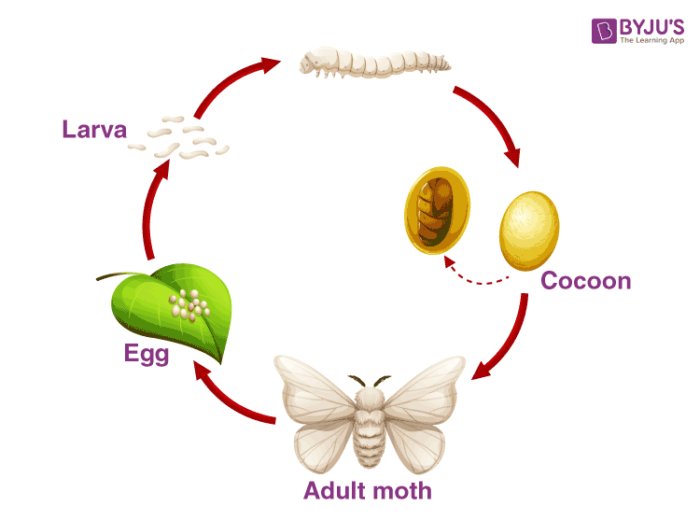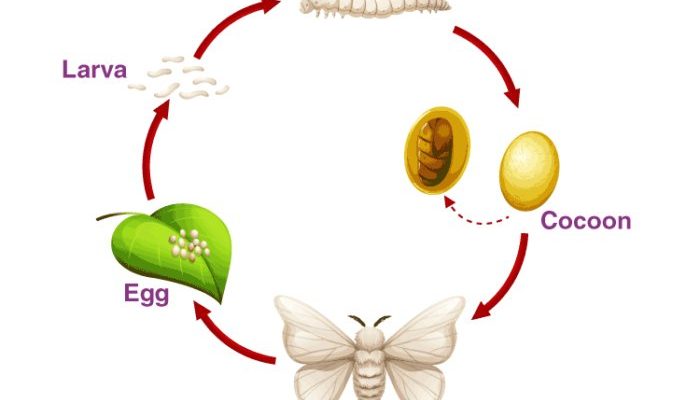
In this journey, we’ll explore the different stages of the silkworm life, much like watching a movie where the protagonist undergoes a profound change. From the delicate eggs laid by the female moth to the fluffy, munching larvae, and eventually to the soaring moth, each phase has its own charm. Let’s dive in and see how these small creatures create the silk we cherish.
The Beginning: Silkworm Eggs
The silkworm lifecycle kicks off with the eggs, which are usually laid by the female moth. Think of these eggs as the seeds of an incredible story waiting to unfold. They are tiny and can often be found clustered together, resembling a small pile of beads. Typically, a female moth can lay anywhere from 300 to 400 eggs!
These eggs need the right environment to thrive. They prefer a warm and humid place, which is why they are often kept in controlled settings for silk production. Under ideal conditions, the eggs hatch in about 10 days. So, if you imagine yourself as a little silkworm, you’d be cozying up, waiting for the moment to break free from your shell.
Once the eggs hatch, that’s when the real adventure begins. The tiny silkworms, called larvae, emerge, and they are ready to eat and grow!
The Larval Stage: Hungry Caterpillars
The first stage after hatching is the larval stage, where the silkworms do what they do best: eat! And boy, do they eat a lot. They primarily munch on mulberry leaves, which are their favorite food. This phase lasts about 4 to 6 weeks, during which they’ll go through several molts, shedding their skin multiple times as they grow.
You might wonder how much they eat during this period. Well, they can consume up to 80,000 times their own body weight in just a few weeks! It’s as if they’re living for one purpose: to bulk up! As they grow, they may look like little green caterpillars, and you can almost feel their excitement as they plow through leaves.
After fully gorging themselves, the silkworms enter the next phase of their lifecycle, gearing up for a remarkable change. But first, they need to find a safe and cozy place to prepare for their transformation.
The Pupal Stage: Cocoon Creation
Next up is the pupal stage, where the silkworms start to think about their next transformation. They spin a protective casing around themselves called a cocoon. This process takes about 2 to 3 days and is truly a sight to behold. Imagine the silkworm working tirelessly, like a master artist crafting a silk masterpiece!
The cocoon is made from a long thread of silk that can stretch up to a mile if unspooled. That’s some serious craftsmanship! Inside the cocoon, the silkworm undergoes metamorphosis, changing from a caterpillar into a moth. This stage can last up to 2 weeks.
While inside, the silkworm is in a sort of waiting room, preparing for its grand debut as a beautiful moth. It’s a crucial time, and this transformation is the heart of the silkworm lifecycle.
The Final Stage: Emerging Moths
After spending time in the cocoon, the moth is ready to break free. This is the moment of transformation from larva to adult. When the moth first emerges, it looks quite different from its caterpillar days. With its delicate wings and soft body, it needs some time to pump blood into its wings to prepare for flight.
This stage usually lasts about a week, where the moth will start looking for a mate. Here’s the thing: adult moths don’t eat. They focus solely on reproduction. Once they mate, the female moth will lay eggs, and the entire lifecycle starts all over again. It’s a beautiful cycle, isn’t it?
In this final stage, the moth doesn’t just float around aimlessly; it plays a crucial role in the ecosystem by pollinating plants, contributing to a vibrant environment.
Why the Silkworm Lifecycle Matters
Understanding the silkworm lifecycle is significant for several reasons. For one, it gives us a glimpse into the delicate balance of nature. The lifecycle speaks to the importance of each stage and how they contribute to the production of silk—a material that has been cherished for centuries.
Furthermore, the silk industry provides countless jobs and economic opportunities around the world. Learning about this lifecycle helps us appreciate the work that goes into creating something as beautiful and luxurious as silk clothing.
Plus, the advances in science and technology have given rise to sustainable practices in silk production, benefiting both the industry and the environment.
The silkworm lifecycle, from egg to moth, is truly a tale of transformation and resilience. Each stage is like a chapter in a captivating novel, filled with growth, change, and purpose. Understanding these stages not only deepens our appreciation for the silk we often take for granted but also highlights the beautiful intricacies of nature.
As we wrap up, remember that this lifecycle shows us the connection between living beings and the environment. So next time you see silk, think of the tiny silkworms that played a part in its creation. They are nature’s little wonders, reminding us of the beautiful cycle of life.

